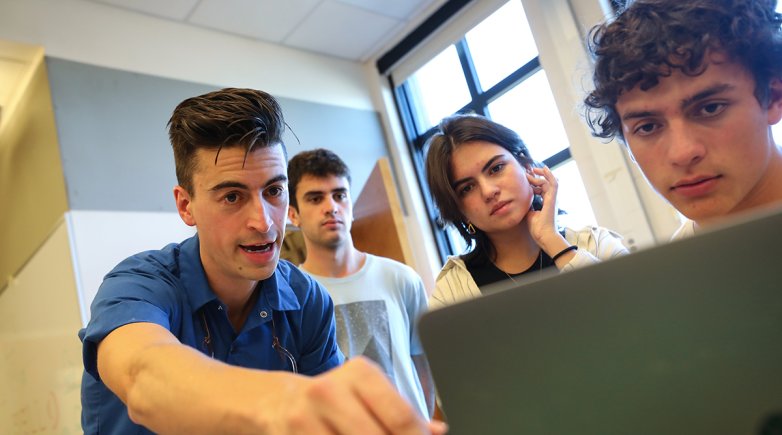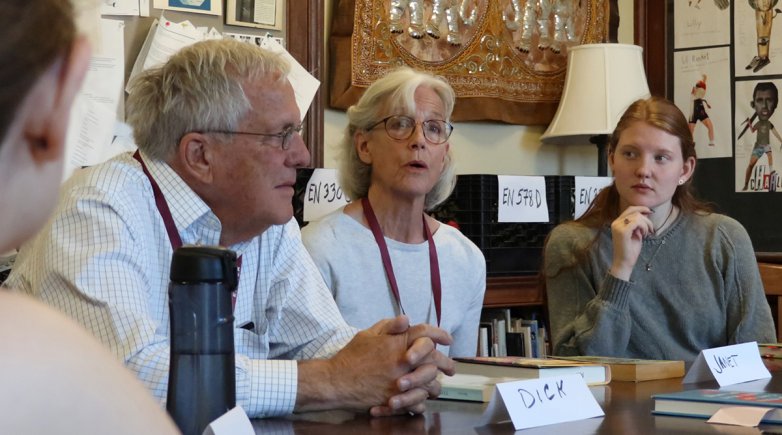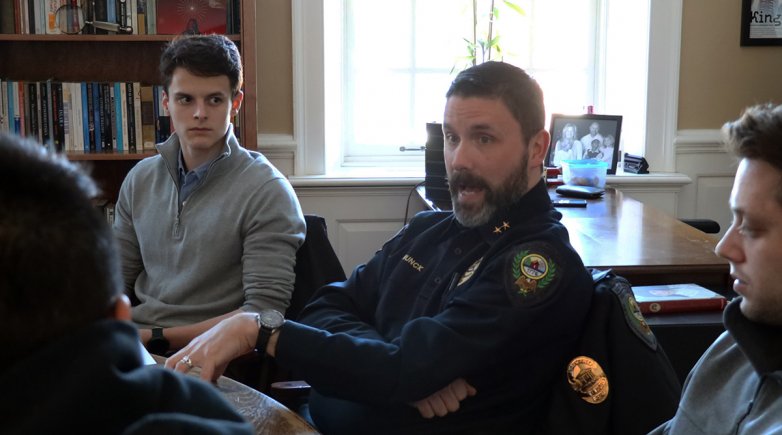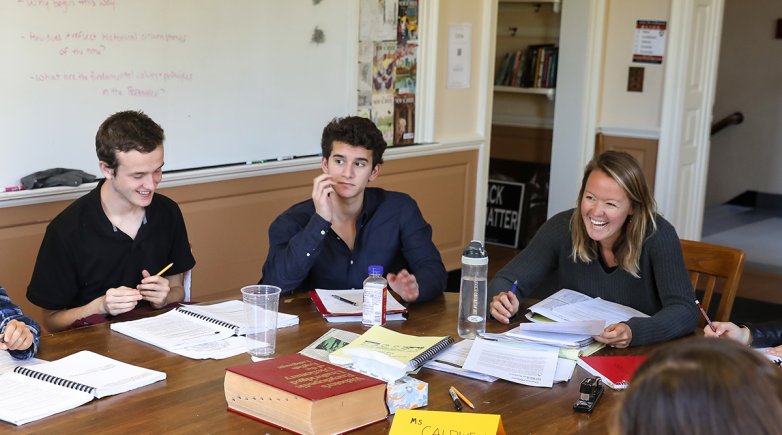Designing a better future
Band saws, laser cutters and 3D printers whir to life in new integrated studies course.
Eager students gather in the doorway of Room 317 in the Phelps Science Center like anxious ski racers at a start gate. When Instructor Nico Gallo gives the OK, the Design Lab quickly fills with laptops, backpacks and conversation. It’s early in the fall term and the rhythm of EXI555: Principles of Engineering and Design is beginning to take shape.
In this integrated studies course, students explore the engineering process through a series of projects including developing hand-sketched and computer-generated designs and producing tangible objects, all while asking, “How can we design and build for a better future?“
Students assemble around a large workbench in the middle of the room as Gallo lays out the expectations for the period. Gallo’s youthful looks may have the uninitiated visitor wondering, “Who’s in charge here?” But it’s soon clear, he’s fully in control, providing guidance and instruction on the trove of tools and machinery available in the Design Lab. It’s a space Gallo, now in his sixth year as the lab’s coordinator, knows well.
The day’s lesson plan, intentionally left loose, only asks that students take their tool case prototypes and make progress toward a finished product. Gallo’s preamble serves as a pep talk to push forward, even if initial designs must be altered, it’s all part of the process. “We need to make some choices early and commit to them fast,” he says. “Build something, test it, and build the next thing. It’s not always linear. ... Don’t get too stressed out but move with a sense of urgency and commit to your decisions early.”

And with that the huddle breaks and students fan out to all reaches of the room. Joey Dong ’23, Jolie Ng ’23 and Casey Realini ’23 start at the laser cutter. The instrument will be in high demand throughout the period. Being first means they’ll have time to work out the kinks. The students place a three-foot piece of birch wood into the machine and move to the computer to pull up their design in Adobe Illustrator. Dialing in the intensity of the laser proves to be difficult and the group works through a series of test cuts with varying success as the smell of burnt wood fills the room.
While the troubleshooting at the laser cutter continues, Gallo gives Rianna Skaggs ’23 and Nana McBrown ’23 a tutorial on the band saw. The demo focuses on how to safely make precise cuts on small pieces of material. Skaggs and McBrown take turns using scrap wood as a buffer between their fingers and the buzzing blade as they feed slivers of birch into the saw.
A loud thud comes from across the room as Jacob Jamani ’23 drops a textbook onto his prototype tool case. He’s testing the strength of small pieces of rolled cardboard he’s added to his design to prevent the case from crushing under pressure. He gives a satisfied nod as both the prototype and the textbook escape in one piece.
With the time in the period running low and the laser cutter still occupied, Skaggs, with her newfound confidence on the bandsaw, suggests the group opt for using the lower-tech option to score the sides of the tool case. Nicholas Rose ’23 steps up to the machine and in a series of quick cuts walks away with what will become the frame.
Just as quickly as the period started, it’s over. Gallo has the students tidy up their workstations and, after a quick debrief, dismisses the class. Those who are able stick around for open lab hours, and the room again whirls with activity.
Editor's Note: This article first appeared in the fall 2022 issue of The Exeter Bulletin.



